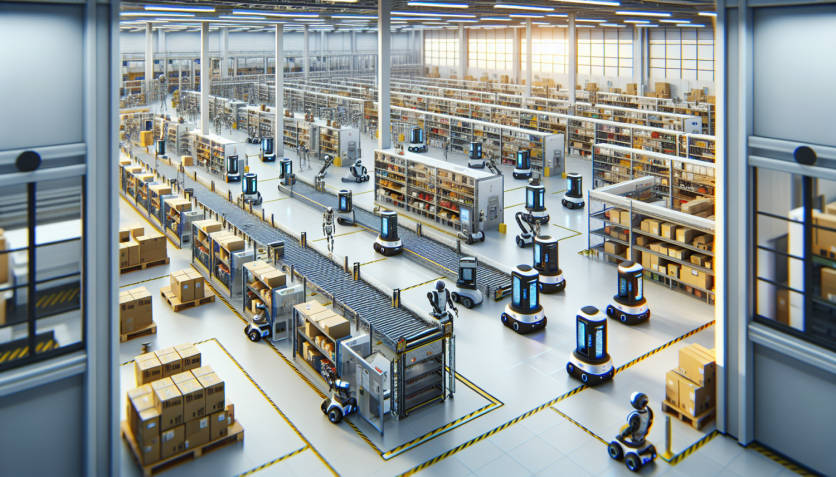
Modernizing factory floors is now a reality with the help of MiR's autonomous mobile robots (AMRs). These innovative machines by industrial robot manufacturers are revolutionizing internal transport and logistics across numerous sectors. But what exactly sets these mobile robots apart? Let's dive in and see.
Versatility and Customization
A key feature of mobile industrial robots is their adaptability. These robots can be modified with various attachments to meet specific business needs. For instance, an AMR can have a conveyor belt for automated material handling or shelves for inventory management. They are built to be easily reconfigured, ensuring they match the changing demands of different industries, from manufacturing to healthcare.
The modular design of AMRs allows for easy integration of various sensors and software, enabling them to navigate complex environments safely. This flexibility means that mobile robots can be deployed in a wide range of settings, from narrow aisles in warehouses to bustling hospital corridors. As businesses grow and change, AMRs can be reconfigured to adapt to new layouts and processes, providing a scalable solution for material handling needs.
The versatility of AMRs also extends to their ability to handle various load capacities and sizes. From small, lightweight items to heavy pallets, these robots can be configured to transport a wide range of materials. This adaptability makes them suitable for industries with diverse material handling needs, such as automotive manufacturing, where parts and components of different sizes need to be moved throughout the facility.
Impact on Efficiency
Integrating mobile industrial robots into factory floors has greatly improved efficiency. By automating repetitive tasks like transporting goods, these AMRs cut down the need for manual labor. This quickens operations and reduces human error. Picture a warehouse where robots move around, delivering parts exactly where needed. The result is faster production times and a more streamlined workflow, leading to cost savings for businesses.
In addition to reducing labor costs, AMRs can operate 24/7 without breaks, further maximizing productivity. They can be programmed to work collaboratively with human workers, taking on the most tedious and time-consuming tasks. This human-robot collaboration allows employees to focus on higher-value activities that require decision-making and problem-solving skills, ultimately leading to a more engaged and satisfied workforce.
Real-Life Case Studies
Real-life examples show how AMRs make a difference. One company improved productivity by 30% after introducing mobile robots for internal logistics. Another facility halved the time required for inventory checks using AMRs. These success stories highlight the concrete benefits of adopting autonomous mobile robots.
Logistics Automation Made Easy
Beyond factory floors, mobile industrial robots are transforming logistics automation. Traditionally, logistics involved a lot of manual effort, which was time-consuming and prone to mistakes. With AMRs, these tasks have become more efficient and reliable. For instance, AMRs can autonomously move through warehouses to pick and place items, ensuring precise order fulfillment and timely deliveries.
Beyond the Assembly Line
The uses for mobile industrial robots go beyond manufacturing. In healthcare, AMRs transport medical supplies within hospitals, allowing staff to focus more on patient care. In retail, these robots help with inventory management and restocking. Even large office campuses benefit from AMRs in terms of document delivery and internal logistics.
A Day in the Life With and Without Autonomous Robots
Imagine a typical day in a warehouse lacking AMRs: workers manually transport heavy loads, leading to physical strain and potential injuries. Now, picture the same setting with autonomous robots: these machines take on the bulk of transportation, freeing employees to handle more complex tasks. The outcome is a safer work environment and happier employees who no longer have to do repetitive manual labor.
The Future of Smart Workplaces
The concept of smart workplaces is rapidly gaining ground, and mobile industrial robots are key in this transformation. A smart workplace uses technology to boost communication systems and streamline operations. By integrating AMRs, businesses can achieve greater efficiency and productivity. As technology advances, even more sophisticated uses for mobile robots will emerge in various industries.
ⓒ 2026 TECHTIMES.com All rights reserved. Do not reproduce without permission.





